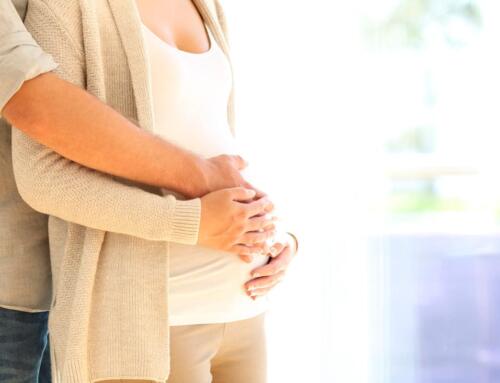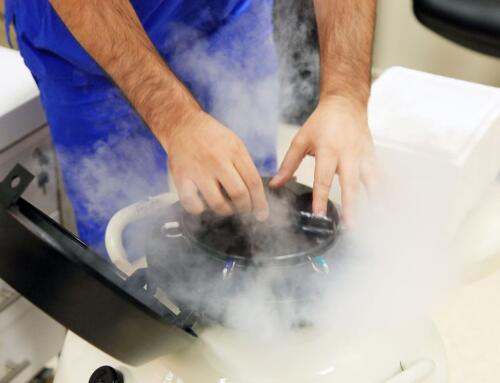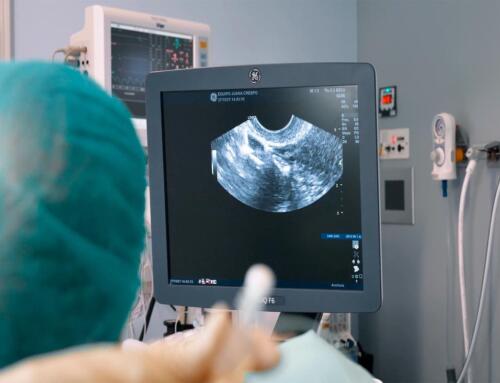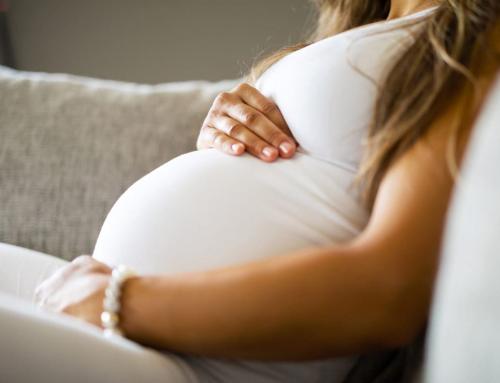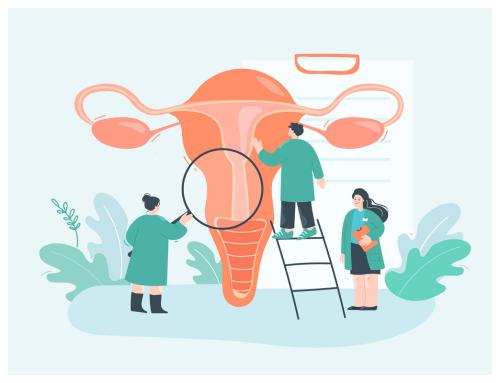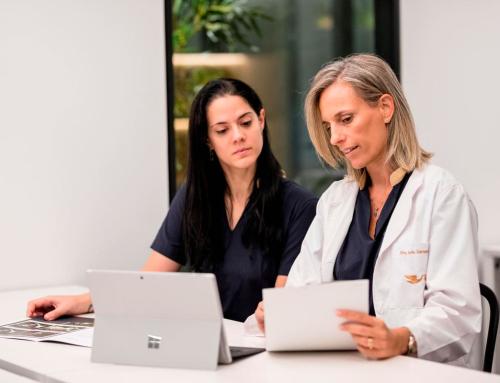.
It remains a “hidden” and underestimated disease in our society. However, it is estimated that more than two million Spanish women (which represents a 10 to 20% of the female population in the country), suffer from endometriosis, a chronic and progressive disease.
Since World Endometriosis Day is celebrated every March 14, from Equipo Juana Crespo we want to give awareness to this disease which, in addition to being painful and disabling, it is also a fertility problem. We join in the fight to ensure that endometriosis is taken into greater consideration so that it can be diagnosed and treated as soon as possible.
Until recently, endometriosis was synonymous with period pain and there was no choice but to put up with it and wait for things to change with pregnancy. Pain was totally normalized. And even today, “dysmenorrhea or period pain is still a social stigma that women hide. This delays diagnosis by an average of 7 years because we have normalized this pain,” explains Dr. Juana Crespo, medical director of Equipo Juana Crespo.
This has been the greatest mistake in endometriosis treatments: it was simply not treated or not properly diagnosed.
Fortunately, this situation is changing in the health field with endometriosis increasingly being given the importance it deserves.
At Equipo Juana Crespo we are aware of the need to approach endometriosis from a global point of view. For our team, early diagnosis is essential. In this audio, Dr. Crespo explains how early diagnosis should be done in teenagers.
What is endometriosis?
As we said, endometriosis is a chronic and progressive disease that consists of the benign growth of endometrial tissue outside its usual place, the endometrium. It is precisely here where the greatest danger of the disease lies, since it spreads to other organs such as the tubes, ovaries, uterus, intestine, bladder, etc.
The layer of endometrial cells covers the uterus every month in order to be able to receive a possible fertilized egg so that the embryo can implant. If there is no pregnancy, at the end of each cycle, the uterus is responsible for expelling the tissue with menstrual bleeding.
As this layer of cells gradually invades other areas of the body, period after period, it produces inflammatory lesions. As they evolve, they become fibrotic and these lesions eventually cause the organ to evolve abnormally.
The endometrial tissue is hormonally dependent on the menstrual cycle, producing bleeding and detachment with menstruation. Endometriosis worsens with each menstrual period, with miscarriages, with premature births, in short, it worsens when the uterus suffers.
Endometriosis, on the other hand, improves with pregnancy because the body stops menstruating for 9 months. In addition, the uterus stretches during pregnancy and in turn the cervix dilates. In this way, the inflammatory lesions that we mentioned, improve. But if pregnancy happens later in life, we may find ourselves with fibrotic lesions that affect various organs involved in reproduction and make conception difficult or even impossible to happen.
Endometriosis symptoms
Do you suspect that you may suffer from endometriosis? Normally, women who have endometriosis usually experience that hormonal and typical changes during the cycle, occur in the places where the endometrial tissue has been inserted. That is why blood and inflammation accumulates and, as a consequence, pain occurs.
These are the most common symptoms:
- Dysmenorrhea, i.e. painful menstruation.
- Pain during and after sexual intercourse
- Reproductive problems, either difficulty or impossibility of pregnancy.
- Abdominal and/or pelvic pain
- Heavy and/or irregular bleeding also between periods.
- Intestinal problems and disorders
- Urinary disorders, i.e., discomfort when urinating.
- Tiredness or chronic fatigue.
If you have any of these symptoms it is very advisable to see a specialist. In Equipo Juana Crespo we are very aware of what this problem, which worsens with time, entails. That is why it is essential “to carry out an early diagnosis, even in teenagers, in order to preserve their fertility, alleviate pain and improve their quality of life,” explains Dr. Crespo.
Endometriosis and fertility, how does it affect?
Among the commonly known symptoms of endometriosis, sterility is undoubtedly one of the symptoms that most worries women.
According to the Spanish Endometriosis Association (AEE), approximately 30% to 50% of patients with endometriosis present sterility or have some problem in getting pregnant naturally.
While the diagnosis of endometriosis is delayed, the disease can progress to a greater or lesser extent. Tissue adhesions affect the reproductive organs, distorting or blocking them. That is why the key lies in early diagnosis, which is currently non-existent. Fifty percent of infertile women are endometriotic. Late diagnosis raises the percentage to 80%, turning the woman into a complex case with devastating consequences in terms of fertility,” explains Dr. Crespo.
It has been demonstrated that the oocytes of women with endometriosis are of poorer quality because they coexist in an adverse follicular environment. As a result, pregnancy rates are lower and the development of the embryos is of lower quality and, therefore, there is a lower probability of successful implantation.
In addition to poor oocyte quality, there are other consequences of endometriosis that have an impact on a woman’s fertility. This is the case of diminished ovarian reserve when there is fibrosis in the ovaries. There may also be abnormalities in the uterus which, due to inflammation and fibrosis, cause abnormal contractions that prevent the sperm from reaching the fallopian tubes or the implantation of the embryo. Also in the fallopian tubes, the presence of endometrial tissue and its consequent inflammation can prevent fertilization.
Pharmacological and surgical treatments
Since endometriosis affects different organs, it is necessary to consider a global and customized strategy to treat the endometriosis of each patient.
The treatment of this disease can sometimes be simple and resolved with drugs and analgesics, in addition to hormonal medication, such as contraceptives, which eliminate the episodes of menstruation.
When this is not enough and the problem affects fertility, it may be necessary to specifically treat certain circumstances that each woman may present, such as ovarian cysts, nodules in certain specific areas of the body between the rectum and vagina.
In Juana Crespo we develop surgical treatments that we usually perform with minimally invasive and laparoscopic surgery. From the simplest ones, such as the removal of an ovarian cyst, to those more complex ones where it is also necessary to free the pelvic organs, which are often stuck together because of endometrial tissue.
We also treat those extreme cases where we even have to perform surgery on the bowel or bladder, because this disease, although considered benign, tends to infiltrate other pelvic organs. That is why, in such complex cases, surgical treatment must be approached from a multidisciplinary perspective, since it is important that several professionals from different areas participate in the decision making process to achieve the best care for the patient.
How to get pregnant when having endometriosis
In Equipo Juana Crespo we always start with an exhaustive diagnosis to determine the exact problem of each patient and their options of achieving pregnancy.
Early diagnosis in teenagers
The diagnosis in teenagers as well as in more adult women is complex, however it is of vital importance an early diagnosis focused mainly in two areas:
The improvement of the patient’s quality of life.
Treatment to preserve fertility over the years.
Late diagnosis
In case of a late diagnosis, where the disease has evolved and presents itself as a complex case, we will have to resort to a laparoscopy and surgical hysteroscopy that allows us to remove the adhesions in the different parts of your body (uterus, ovaries, fallopian tubes, intestines, bladder, etc.). In this way we manage to improve the anatomy and functionality to ensure maximum embryo implantation.
In Juana Crespo, we develop personalized stimulation treatments. With this we can achieve an improvement of antral that allows us to slightly increase the quantity of eggs and substantially improve the quality of the recovered eggs.
This is how we can obtain quality eggs of our own and therefore develop an IVF. If it has not been possible to retrieve eggs, we can resort to ovodonation to achieve the desired pregnancy.
Customized and global treatment
The different assisted reproduction techniques aid in achieving pregnancy, however, at Equipo Juana Crespo we differentiate ourselves by developing an individualized strategy from the moment the patient arrives at our clinic and is diagnosed with the disease until beyond achieving pregnancy.
For us it is essential to customize the protocols, the follow-up and the ability to adapt to the evolution of the cycle of each of our patients with endometriosis.
Our goal is to develop a global treatment of the disease. In this way, we limit the degree to which it affects health in general and fertility in particular. To do this, we take advantage of our experience and the different possibilities offered by reproductive medicine to achieve pregnancy.
If you have endometriosis or some related symptoms and you have not yet been diagnosed, do not wait any longer because this disease continues to advance. Ask us what options you have to improve or preserve your fertility. Request your first appointment by calling us at 961 042 557 or through our email: info@juanacrespo.es Remember that period pain is not normal and, therefore, we must find its causes.
.



